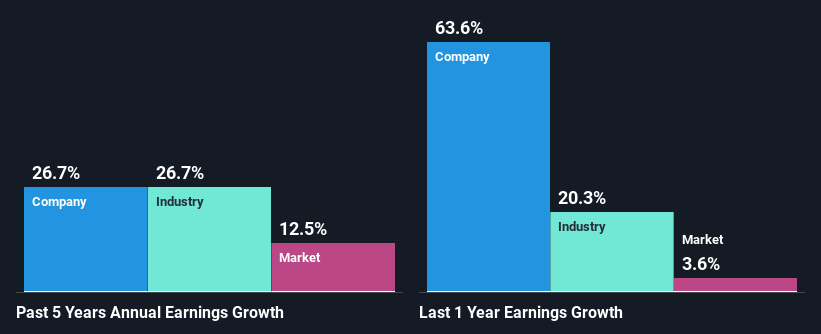Telekom Malaysia Berhad's (KLSE:TM) Fundamentals Look Pretty Strong: Could The Market Be Wrong About The Stock?
Telekom Malaysia Berhad (KLSE:TM) has had a rough month with its share price down 6.6%. However, stock prices are usually driven by a company’s financial performance over the long term, which in this case looks quite promising. Specifically, we decided to study Telekom Malaysia Berhad's ROE in this article.
Return on equity or ROE is an important factor to be considered by a shareholder because it tells them how effectively their capital is being reinvested. In simpler terms, it measures the profitability of a company in relation to shareholder's equity.
View our latest analysis for Telekom Malaysia Berhad
How To Calculate Return On Equity?
The formula for ROE is:
Return on Equity = Net Profit (from continuing operations) ÷ Shareholders' Equity
So, based on the above formula, the ROE for Telekom Malaysia Berhad is:
20% = RM1.9b ÷ RM9.3b (Based on the trailing twelve months to December 2023).
The 'return' is the profit over the last twelve months. So, this means that for every MYR1 of its shareholder's investments, the company generates a profit of MYR0.20.
What Is The Relationship Between ROE And Earnings Growth?
Thus far, we have learned that ROE measures how efficiently a company is generating its profits. Depending on how much of these profits the company reinvests or "retains", and how effectively it does so, we are then able to assess a company’s earnings growth potential. Assuming all else is equal, companies that have both a higher return on equity and higher profit retention are usually the ones that have a higher growth rate when compared to companies that don't have the same features.
A Side By Side comparison of Telekom Malaysia Berhad's Earnings Growth And 20% ROE
At first glance, Telekom Malaysia Berhad seems to have a decent ROE. Especially when compared to the industry average of 7.9% the company's ROE looks pretty impressive. This probably laid the ground for Telekom Malaysia Berhad's significant 27% net income growth seen over the past five years. We reckon that there could also be other factors at play here. For instance, the company has a low payout ratio or is being managed efficiently.
As a next step, we compared Telekom Malaysia Berhad's net income growth with the industry and found that the company has a similar growth figure when compared with the industry average growth rate of 27% in the same period.
Earnings growth is an important metric to consider when valuing a stock. It’s important for an investor to know whether the market has priced in the company's expected earnings growth (or decline). This then helps them determine if the stock is placed for a bright or bleak future. Is TM fairly valued? This infographic on the company's intrinsic value has everything you need to know.
Is Telekom Malaysia Berhad Using Its Retained Earnings Effectively?
Telekom Malaysia Berhad's significant three-year median payout ratio of 53% (where it is retaining only 47% of its income) suggests that the company has been able to achieve a high growth in earnings despite returning most of its income to shareholders.
Moreover, Telekom Malaysia Berhad is determined to keep sharing its profits with shareholders which we infer from its long history of paying a dividend for at least ten years. Based on the latest analysts' estimates, we found that the company's future payout ratio over the next three years is expected to hold steady at 58%. Regardless, Telekom Malaysia Berhad's ROE is speculated to decline to 15% despite there being no anticipated change in its payout ratio.
Conclusion
On the whole, we feel that Telekom Malaysia Berhad's performance has been quite good. In particular, its high ROE is quite noteworthy and also the probable explanation behind its considerable earnings growth. Yet, the company is retaining a small portion of its profits. Which means that the company has been able to grow its earnings in spite of it, so that's not too bad. Having said that, on studying current analyst estimates, we were concerned to see that while the company has grown its earnings in the past, analysts expect its earnings to shrink in the future. To know more about the latest analysts predictions for the company, check out this visualization of analyst forecasts for the company.
Have feedback on this article? Concerned about the content? Get in touch with us directly. Alternatively, email editorial-team (at) simplywallst.com.
This article by Simply Wall St is general in nature. We provide commentary based on historical data and analyst forecasts only using an unbiased methodology and our articles are not intended to be financial advice. It does not constitute a recommendation to buy or sell any stock, and does not take account of your objectives, or your financial situation. We aim to bring you long-term focused analysis driven by fundamental data. Note that our analysis may not factor in the latest price-sensitive company announcements or qualitative material. Simply Wall St has no position in any stocks mentioned.

 雅虎香港財經
雅虎香港財經 
